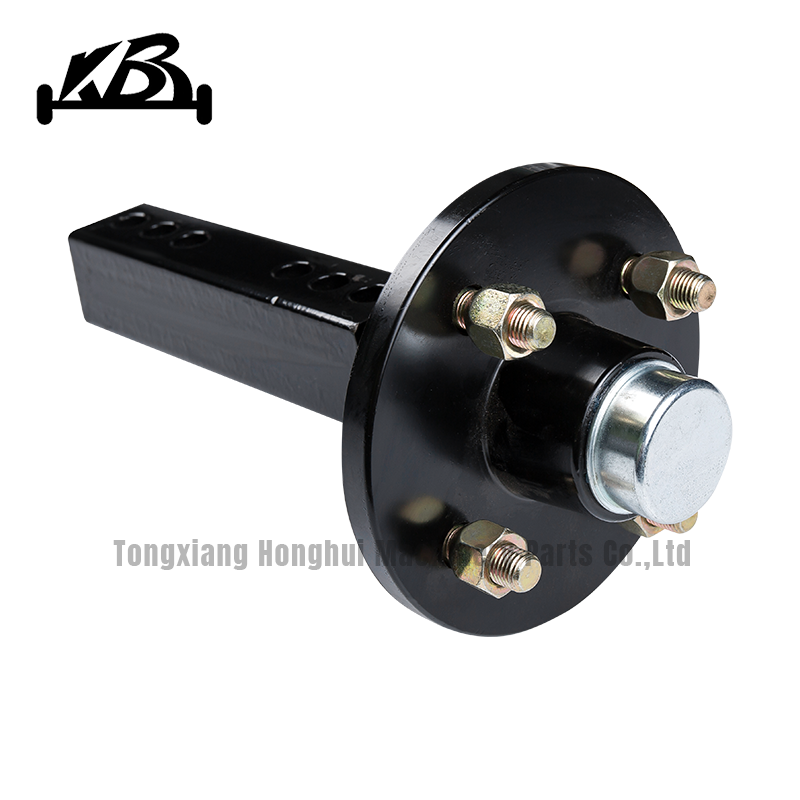The choice of braking system plays a crucial role in ensuring safety, efficiency, and performance. When dealing with straight axles that lack integrated braking mechanisms, known as straight axles without brakes, the reliance on external braking devices becomes essential. These devices vary widely in type and application, each offering distinct advantages tailored to different vehicle types and operating conditions.
Mechanical Drum Brakes
Overview: Drum brakes utilize a rotating drum attached to the axle, housing brake shoes that expand outward upon activation to create friction against the drum's inner surface. This friction slows down or stops the axle's rotation.
Application: Mechanical drum brakes are versatile, suitable for both light-duty vehicles and heavy-duty applications like trailers and some off-road equipment. They are valued for their durability and ability to withstand harsh conditions.
Mechanical Disc Brakes
Overview: Disc brakes employ a caliper mechanism to squeeze brake pads against a rotor (disc) attached to the axle. This action generates friction, effectively decelerating the axle.
Application: Widely adopted in high-performance vehicles, motorcycles, and bicycles due to their responsive braking and heat dissipation capabilities. They are also favored in industrial settings where precise braking control is necessary.
Hydraulic Drum Brakes
Overview: Similar to mechanical drum brakes, hydraulic drum brakes utilize hydraulic fluid pressure to activate the brake shoes against the drum, offering enhanced braking power and consistency.
Application: Found in larger vehicles, trailers, and industrial equipment where the integration of hydraulic systems supports efficient braking performance. They are preferred for applications requiring reliable stopping power under varying loads.
Hydraulic Disc Brakes
Overview: Hydraulic disc brakes operate similarly to their mechanical counterparts but utilize hydraulic fluid to amplify braking force, providing robust and reliable braking performance.
Application: Commonly used in motorcycles, bicycles, and automotive applications where superior braking modulation and effectiveness are essential. They are also favored in industrial machinery for their consistent performance under heavy loads.

Electric Brakes
Overview: Electric brakes utilize an electric current to activate electromagnets within the brake assembly, causing brake shoes or pads to engage with a drum or disc, thereby generating braking force.
Application: Predominantly employed in trailers, caravans, and recreational vehicles where integration with electric braking systems enhances braking efficiency and control. They are prized for their ease of operation and compatibility with electric brake controllers.
Air Brakes
Overview: Air brakes rely on compressed air to apply pressure to brake shoes or pads, commonly used in heavy-duty vehicles such as trucks, buses, and trains.
Application: Essential in commercial vehicles where air brake systems ensure reliable and powerful braking capabilities, particularly in scenarios demanding frequent and abrupt stops. They are known for their safety features and effectiveness in large-scale transportation.
Friction Brakes (e.g., Band Brakes)
Overview: Friction brakes, such as band brakes, involve a band or strap wrapped around the axle or a rotating drum. When activated, the band tightens against the drum to slow down or stop the axle's rotation through friction.
Application: Typically utilized in smaller vehicles, light-duty equipment, and certain industrial applications where simplicity and cost-effectiveness are paramount. They provide adequate braking performance for less demanding scenarios.
Choosing the Right Braking System
Selecting the appropriate external braking device for a straight axle without built-in brakes depends on several factors, including the vehicle's intended use, operating conditions, maintenance requirements, and regulatory standards. Each type of braking system offers unique advantages in terms of performance, durability, and operational suitability. Whether it's the robustness of hydraulic systems, the responsiveness of disc brakes, or the simplicity of mechanical designs, matching the braking system to specific application needs ensures optimal safety and efficiency on the road or in the field.
In conclusion, while straight axles without integrated brakes offer weight savings and cost advantages, the selection and integration of external braking devices are critical for achieving safe and effective braking performance. By understanding the capabilities and applications of different braking systems, vehicle designers and operators can make informed decisions to enhance overall vehicle safety and operational effectiveness.



 中文简体
中文简体













